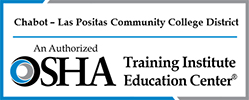by Ken Cushman |
It wouldn’t be going too far out on a limb to say that most of the people reading this article are at least somewhat interested in the realms of Safety & Occupational Health (SOH). Many of you are probably employed by a construction company or other business entity that has managed to take a bit of overhead, or profit, to carve out the funding for an individual, or perhaps a team, to handle compliance issues surrounding the work being done. There is, after all, data that helps prove a payoff in doing so, as non-compliance and mishaps are far more brutal to the bottom line than the planned expenditures for these personnel.
So, what happens if there is no overhead account or profit margin to pillage, as you would find at a government agency. How do they deal with compliance? “Collateral duty personnel” refers to ‘a duty that is secondary and supplemental to the primary duty of the employee’ that is typically used by the federal government and in most cases involves the employee spending up to 20% of their time on the secondary duty. Government agencies use collateral duty personnel to augment or even replace a full-time or part-time person in their SOH program, often giving someone with little understanding of safety and health the reins to the program.
So, are government agencies excluded from complying with OSHA or other compliance agencies? In a word, no. There are provisions within the OSH Act of 1970 that delegate OSHA jurisdiction over state and local government employees down to the states, with many states creating their own programs that cover both private and government employers alike. This means that government employees do have to follow the same industry standards written in the CFR or equivalent state-level regulations as other businesses.
Federal employees were initially exempted from certain parts of the OSH Act and weren’t required to receive compliance inspections from OSHA or conduct recordkeeping of illnesses and injuries. However, Executive Order 12196 was signed in 1980, leading to the promulgation of 29 CFR 1960, which deals exclusively with federal agencies and their safety programs. It lists specific program requirements that agencies must adopt, spells out qualifications for professional SOH positions that must be hired, and even dictates employee safety committees and training standards. This is well above what is specifically required by OSHA for most businesses but was set up as a type of benchmark for what an SOH program can be.
If you’d like to learn more about Part 1960 and get some practical insight into building a safety program as a part-time, or ‘Collateral Duty’ Safety Officer, consider signing up for the upcoming OSHA #6005-Collateral Duty Course for Other Federal Agencies course. This 4-day course is taught from the perspective of a federal safety professional, and really focuses on the basics of what someone would need to know to get a new safety program off the ground or pick up one that has been flailing. OSHA #6005 is one of the optional courses for several of the OTIEC Certificates and is a great way to round out your knowledge base for those programs.
 Ken Cushman has nearly 30 years of safety and occupational health experience beginning with 8 years in the US Air Force, and now has over 20 years as an instructor. Ken has taught courses in Electrical Safety, LOTO, Accident Investigation, Confined Space, Machine Guarding, Safety and Health Programs, Hazardous Materials, Construction Standards, and Collateral Duty Safety among others. He has held safety certifications from the BCSP as an Occupational Safety & Health Technologist, ANSI as a Safety & Health Management Professional, and a Safety Management Certificate from ASSE. Most of Ken’s time is spent as a regional manager responsible for overseeing health, safety, and environmental programs for a federal research agency in eight western states and running his small construction company.
Ken Cushman has nearly 30 years of safety and occupational health experience beginning with 8 years in the US Air Force, and now has over 20 years as an instructor. Ken has taught courses in Electrical Safety, LOTO, Accident Investigation, Confined Space, Machine Guarding, Safety and Health Programs, Hazardous Materials, Construction Standards, and Collateral Duty Safety among others. He has held safety certifications from the BCSP as an Occupational Safety & Health Technologist, ANSI as a Safety & Health Management Professional, and a Safety Management Certificate from ASSE. Most of Ken’s time is spent as a regional manager responsible for overseeing health, safety, and environmental programs for a federal research agency in eight western states and running his small construction company.

